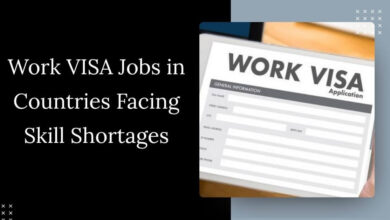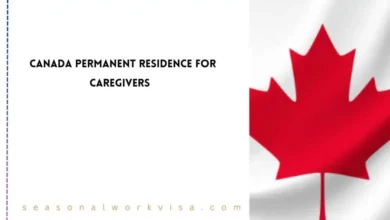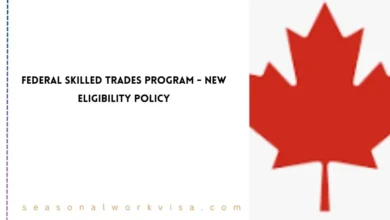Australia Hiring Surges 2025 – Global Skilled Workers

Australia just sent a positive signal to qualified workers searching for career opportunities throughout the world. Hiring activity nationwide has increased back to pre levels, per Jobs and Skills Australia’s (JSA) most recent February 2025 Recruitment Insights Report. For talented professionals throughout the world who are considering relocating to Australia, this is wonderful news. What does this actually mean for you as an international skilled worker, then? Let’s examine the main conclusions and their implications for your career.
Strong Hiring Activity Returns:
Recruitment activity dramatically increased to 49% in February 2025, matching the same period the previous year, following a seasonal decline in January. With a hiring rate of 55% in regional (Rest of State) areas, this is a blatant indication that Australia’s labour market is once again accelerating.
Good to know: Australia’s rural and suburban areas may provide faster employment prospects and possible migration benefits, particularly under regional visa streams, as regional firms are employing more than those in large cities.
Employers Are Finding It Easier to Hire (And That’s Good News):
The rate of recruitment difficulty fell sharply from prior years to 43%.
Why this matters:
Reduced hiring difficulty frequently translates into less fierce competition, quicker processing, and a greater openness to considering candidates from outside, especially if you possess in-demand expertise.
Vacancies Are Being Filled Faster Than Ever:
A record low of 36% of companies said they were unable to fill a position within a month. Shorter recruitment timelines and more effective hiring procedures are the reasons for this decrease from 54% just a year earlier.
Employers are eager to hire, so now is a great time for qualified individuals to apply, especially those who intend to travel to Australia on employer-sponsored visas.
Most Hires Due to Staff Turnover, Not Expansion:
While 28% of firms hired for newly established positions, almost 60% of recruiting was done to replace previous employees.
As a result, even while the workforce is growing, the majority of the opportunities are in filling critical positions, many of which are still on Australia’s Skill Shortage Lists.
Fewer Employers Expecting to Hire in Coming Months:
It’s interesting to note that, compared to 26% a year ago, only 20% of firms anticipate expanding their personnel during the next three months.
Don’t be discouraged:
It simply indicates a stable labor market, where job listings are mostly focused on replacing employees or addressing persistent skill shortages rather than rapid expansion. This does not imply that opportunities are drying up.
Australian Capital Cities vs Regional Areas: Where Are the Jobs?
| Indicator | Capital Cities | Rest of State |
|---|---|---|
| Recruitment Rate | 46% | 55% |
| Recruitment Difficulty | 38% | 52% |
| Expect to Increase Staff | 20% | 19% |
The aforementioned chart indicates that while the rest of the state is recruiting more people, it is also having more difficulty filling positions. As a result, these locations are becoming popular destinations for skilled migrants who are willing to move outside of cities.
What This Means for International Skilled Workers?
The labor market in 2025 offers a lot of prospects for talented foreign individuals looking for job in Australia. What this means for you is broken down as follows:
Opportunity Summary for Overseas Workers in Australia:
- Increased Job Availability:
- There is a strong need for skilled workers, particularly in fields included in Australia’s Skilled Occupation Lists, since there are more job opportunities currently than there were at the beginning of the year.
- Faster Hiring Cycles:
- This is a great moment to apply because hiring cycles are getting faster. Talent is desperately needed by employers in a variety of industries.
- Focus on Regional Australia:
- There is a significant increase in employment prospects in regional Australia, particularly in the fields of building, engineering, IT, healthcare, and crafts. Because there is less rivalry than in large cities, these places are in high demand and might have better opportunities for landing a job.
- High Demand for Skilled Occupations:
- Jobs in the following industries, particularly those on the Australian government’s Skilled Occupation Lists, are still in high demand:
- Trades (e.g., electricians, plumbers)
- Healthcare (e.g., nurses, doctors, medical technicians)
- Engineering (e.g., civil, mechanical, electrical engineers)
- IT (e.g., software engineers, network administrators)
- Construction (e.g., carpenters, project managers)
- Jobs in the following industries, particularly those on the Australian government’s Skilled Occupation Lists, are still in high demand:
- Visa Options for Global Talent:
- For talented workers wishing to work in Australia, employer-sponsored visas such as subclass 186 (Employer Nomination Scheme Visa) and subclass 482 (Temporary Skill Shortage Visa) remain important avenues.
- For people who are willing to live and work outside of large cities, regional migration pathways are also excellent choices because they offer long-term access to permanent status.
Application Process Australia Hiring Surges?
Now is a fantastic moment to move to Australia if you’re considering doing so as a skilled worker. The labor market is actively looking for talent from across the world, and there are a few things you can do to increase your chances of getting a job and a visa. Here is a list of the main things to think about:
1. Search for Australian Employers Hiring:
- Seek out employers actively hiring skilled workers by using job platforms like:
- Seek
- Workforce Australia
- These platforms regularly feature listings for positions across various sectors, particularly those in high demand.
2. Tailor Your Resume:
- Tailor your CV to Australian requirements, emphasizing pertinent credentials, certifications, and abilities.
- Clear, succinct resumes that highlight your experience and qualifications in line with job specifications are valued by Australian businesses.
- Include any Australian-specific credentials or qualifications, along with job experience that shows your abilities meet local standards.
3. Consider Regional Locations:
- Seek chances in Australia’s regional areas, where hiring qualified personnel is frequently more challenging.
- In addition to being more prevalent, regional positions may also come with extra advantages, such a quicker route to permanent residence via regional migration visas (e.g., subclass 491).
- Particularly in industries like construction, IT, engineering, and healthcare, regional businesses are frequently more willing to sponsor talented individuals for visas.
4. Explore Visa Pathways:
- In order to import skilled individuals, employer-sponsored visas (such as subclass 482 and 186) are frequently utilised.
- If you work in a regional location, you might choose to apply for the subclass 491 Regional Skilled Migration Visa, which provides a route to permanent residency.
- With the subclass 491 visa, you can live and work in regional Australia for a maximum of five years. Once you complete the conditions, you can apply for permanent residency.
What’s Next?
More recent trends will be included in the March 2025 Recruitment Insights Report, which is anticipated to be published on April 15, 2025, to assist qualified workers in making well-informed career selections.
References:
- https://www.jobsandskills.gov.au/
- https://www.jobsandskills.gov.au/sites/default/files/2025-03/reos_recruitment_insights_report_february_2025.pdf.
Conclusion:
For talented individuals around the world, Australia’s labor market in 2025 offers a multitude of chances. Now is a great time to look into employment opportunities in Australia because of a rise in hiring, especially in regional areas, and a persistent need for specialists in important industries. You can greatly increase your chances of landing a job and subsequently gaining permanent residency by utilising the appropriate visa channels and customising your job application.
Frequently Asked Questions:
What is the current state of Australia’s labor market for international workers
Australia’s labor market has seen a significant rebound, with hiring activity matching pre levels, particularly in regional areas. Employers are finding it easier to hire, and recruitment cycles are faster than ever.
What visa options are available for skilled workers looking to work in Australia?
Skilled workers can apply for employer-sponsored visas like subclass 186 (Employer Nomination Scheme) and subclass 482 (Temporary Skill Shortage Visa). Regional migrants can also explore subclass 491 for a pathway to permanent residency.




